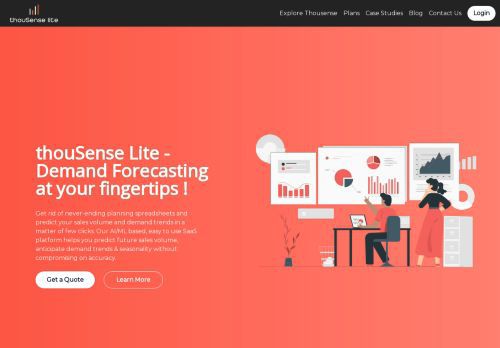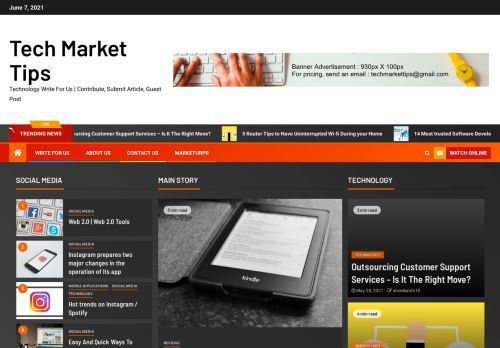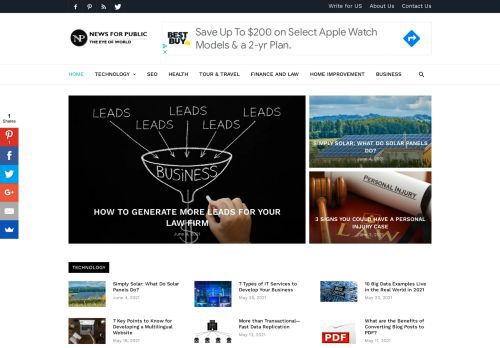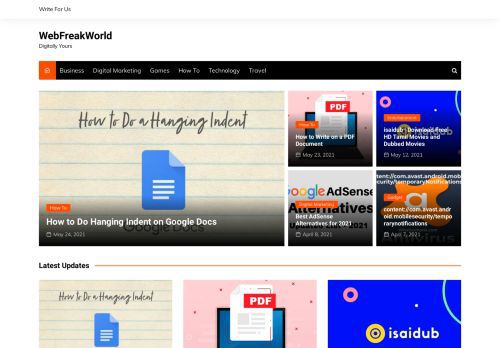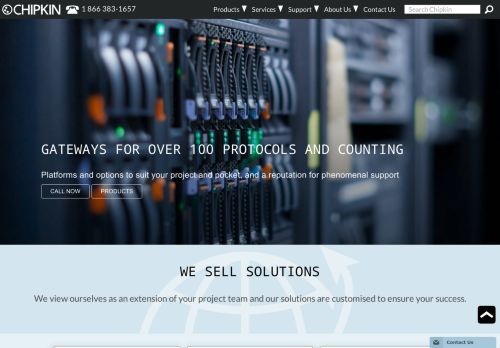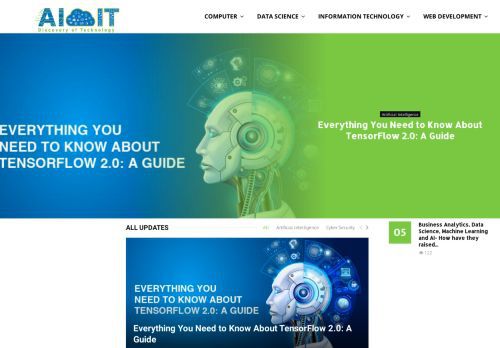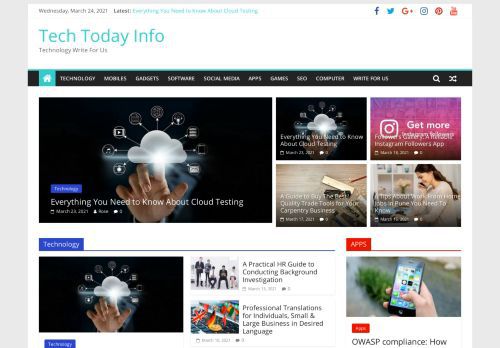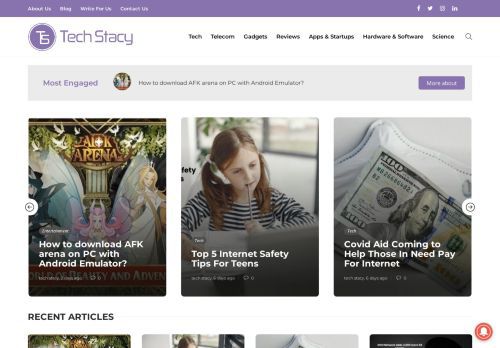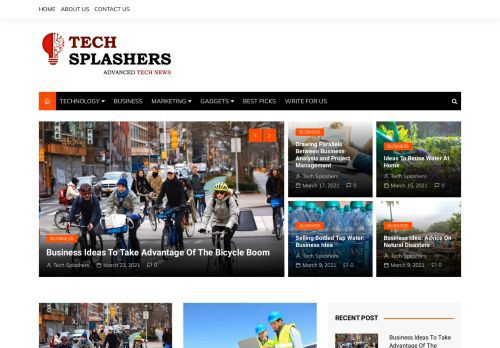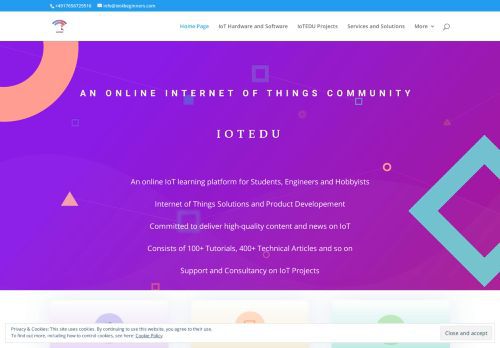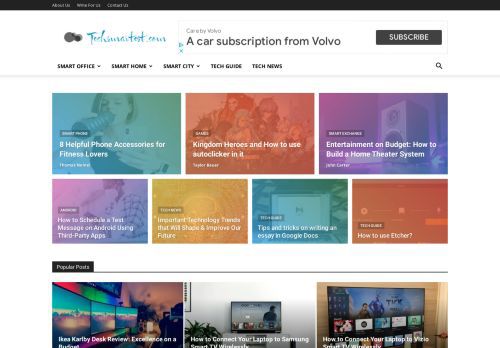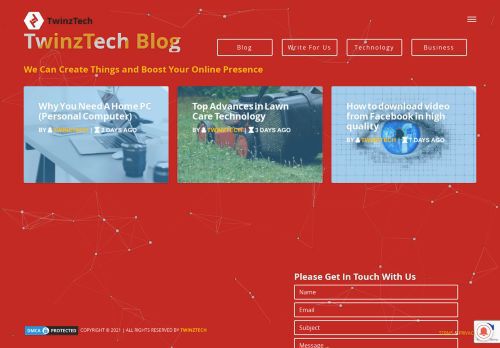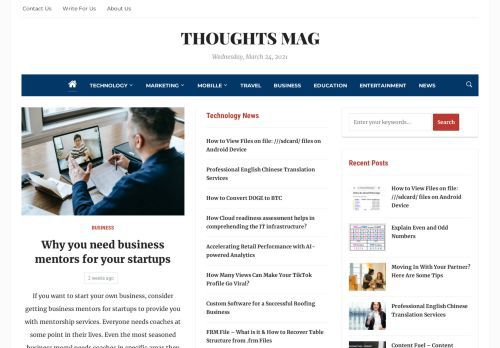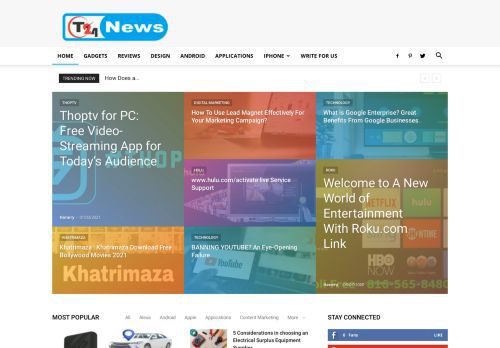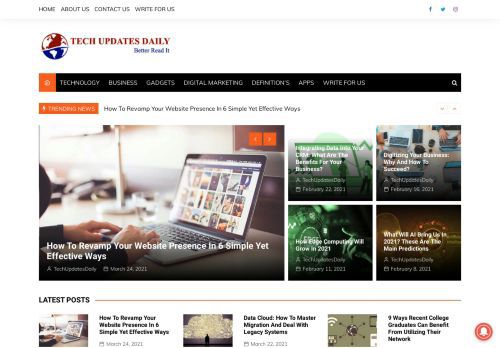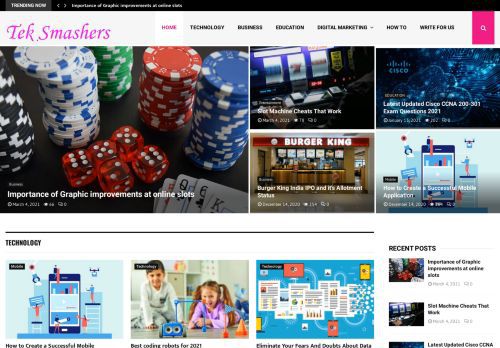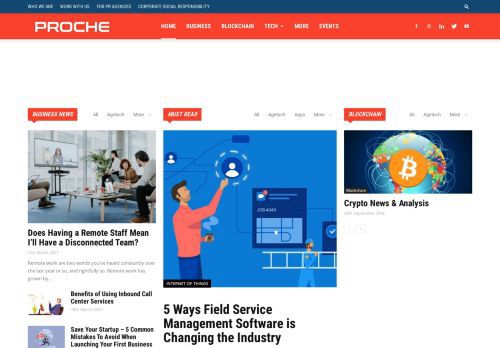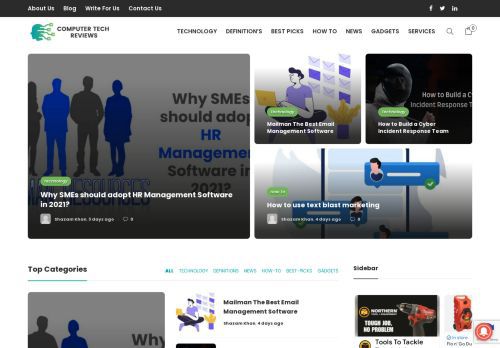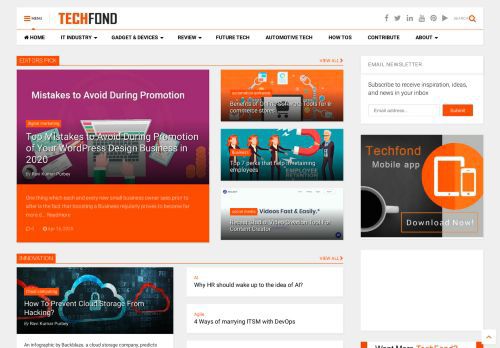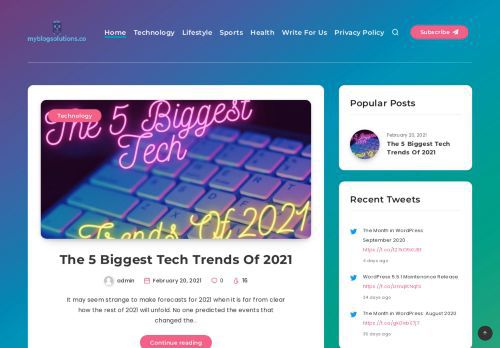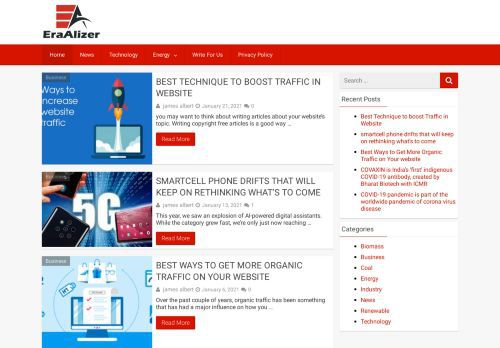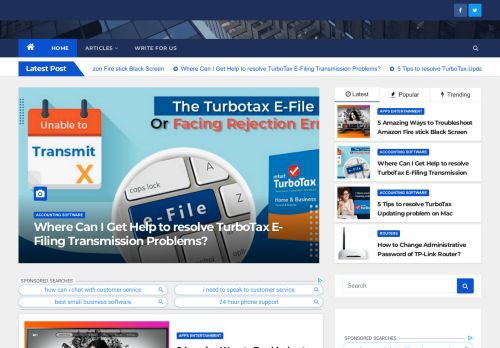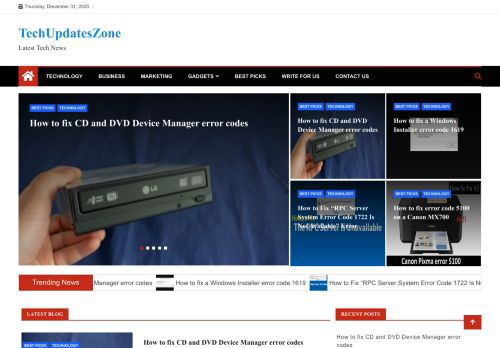Write For litethousense | Guest Post Submission
Added on 05 September 2022
Introduction to Demand Forecasting:
Demand forecasting is a combination of two terms: demand followed by the forecast. Demand is defined as the external requirements of a manufactured product or a usable service. Forecasting, in general, implies developing an estimate in the present for an activity that will take place in the future.
All firms use these forecasts to shape their sales and marketing strategies. It makes a significant contribution to their profitability.
Why Demand Forecasting:
Demand forecasting is a strategy for predicting the future demand for a particular item or service. It is based on an in-depth examination of prior demand for that specific item or service in the market.
Effects of not using AI/ML based demand forecasting:
Inaccurate price forecasting can ripple effect across the company, resulting in supply management bottlenecks and lower profitability.
Market Prediction
A significant market prediction linked to operational planning is critical in mitigating the volatility spillover impact. Demand forecasting should be done scientifically, with events and facts relevant to the prediction.
Machine Learning Forecast Accuracy
Machine learning advances forecast accuracy by enabling improved projections based on current information from external and internal sources like populations, climate, review sites, and social networks. Supply chain networks can exceed networks controlled manually by data professionals and react to external changes using data sources and sophisticated demand planning artificial intelligence software.
AI-ML demand forecasting:
Machine learning allows businesses to include the wide variety of elements and interactions that influence demand daily in their retail projections. It is highly significant since weather data alone might include thousands of distinct aspects that can influence demand.
Machine Learning Algorithms
Machine learning algorithms produce continually improving models based only on the data you give, whether from your organization or other data sources. The main advantage is that such a technology can handle general merchandise data sets from various sources without requiring human labour.
This data analysis strategy, powered by AI-based demand forecasting, will minimize fulfilment lead-time, back orders caused by uneven supply and demand, and surpluses, among other things.
Demand Planning:
Investigate the benefits of the ‘Predict-Demand Planning’ demand forecasting system, including its AI-based demand price forecasting efficacy, data analysis accuracy, and actual replies.
Outlier Detection:
Outlier detection using AI in demand planning aids in making sound business choices. It allows for the early detection of oscillations and effective interventions at the appropriate moment. AI goes even further, recommending specific courses of action that consider internal limits and established parameters. As a result, the risk of inadequate operations to fulfil demand decreases, and inconsistencies along the distribution network are addressed.
What Artificial Intelligence does in demand forecasting:
Artificial intelligence refers to a computer system that can learn new knowledge and skills and adapt and apply them to different surroundings and circumstances. When we talk about demand forecasting, we usually refer to machine learning, a subset of artificial intelligence and its capacity to discover trends and patterns in various types of data and use that to anticipate the future demand for products and services.
Short Term predictions:
AI can be highly beneficial to short-term predictions. This subset of Demand Forecasting, also known as Demand Sensing, uses the multidimensional nature of AI-driven forecasting with real-time data – imagine everything from weather reports to focused on advancement – to produce hourly or daily projections. It is possible only by using demand planning artificial intelligence software.
Accuracy level in using AI-powered demand forecasting tools:
This increase in accuracy has the unintended consequence of optimizing buffer-stock levels, allowing you to avoid the danger of overstocking while preserving product availability. Furthermore, as buffer-stock levels are lowered, working capital and space utilized for storing the goods are also reduced. Overall, Intelligence forecasting can help you have less stock on hand and lower logistical costs while preserving customer happiness.
Intelligent Demand Predictions:
Demand predictions provide the best foundation for all critical supply chain operations. As a result, it is even more critical that they are as exact as practicable and kept current regularly. AI provides significant benefits in this context since it takes less time to pick appropriate forecasting techniques for the specific product levels and automatically merges them. It provides a unique forecast model for each product without requiring user intervention. Say goodbye to time-consuming forecast modelling and adopt intelligent demand planning software.
Intelligent demand forecasting in the Retail Industry:
Machine learning also makes retail demand forecasting more efficient and straightforward because it uses demand planning artificial intelligence software. Machine learning automatically takes all these aspects into account without involving human bias and errors.
In addition to considering a plethora of elements, machine learning allows for capturing the impact when several factors interact, such as weather and day of the week. AI demand forecasting tools are the best way to minimize errors and maximize profits.
AI-based forecasting in Other Businesses:
If a business employs AI, it can monitor every aspect of the distribution chain, from the number of items sold to when supplies will run out (based on SKU numbers.) It also maintains track of which items aren’t selling effectively (resulting in higher storage costs) and how sales and demand might vary depending on the season or period of the year.
Advantages of using AI-ML-based forecasting:
Better Customer Relationships:
The AI-ML-based Intelligent demand planning will help to keep customers happy for a more extended period. Customers will be pleased when the product they need is always accessible, and precise projections will assist in keeping warehouses filled enough to fulfil demand.
Cost Effectiveness:
Forecasting demand, when done correctly, will help to adapt procedures to boost efficiency throughout the distribution chain. Because businesses can forecast what consumers want at what time, it will eventually help reduce surplus stock levels, enhancing the company’s profitability.
AI demand forecasting efficiency:
AI-powered demand planning software allows intelligent demand forecasting which delivers an efficient output and helps to improve profit maximization.
Markdown/discount optimization improvement:
Cash-in-hand is a typical occurrence at retail establishments. Certain things remain unsold for longer than intended in this circumstance. This leads to higher-than-anticipated product costs and raises the chance that these items may go out of style or become outdated, destroying their value.
The company offers their goods at lower margins in these conditions. Such circumstances can be avoided with precise Artificial Intelligence and Machine learning-based demand forecasting.
AI-powered demand forecasting output:
Machine learning is an essential element of AI’s framework, and it’s highly valuable for delving into the essentials of a business’s information.
About 75% of the data acquired by corporations is never used. Artificial Intelligence and Machine learning can take underused historical information and merge them with actual statistics to provide businesses with an accurate picture of everything, from product demand to supply chain difficulties.
AI-demand forecasting progresses over time:
It helps in estimating and analyzing where and why things didn’t go as planned. Provide insights on which is already doing well, and which needs to be improved. The projections will be improved with time.
Conclusion:
Demand planning artificial intelligence software enables businesses to predict and forecast accurately, thereby reducing errors, and human bias, improving customer satisfaction and finally maximizing profit. Want to know more about how the software works? To get the latest updates on demand forecasting, Check this link lite.thousense.ai and get your business to the next level.
Demand forecasting is a combination of two terms: demand followed by the forecast. Demand is defined as the external requirements of a manufactured product or a usable service. Forecasting, in general, implies developing an estimate in the present for an activity that will take place in the future.
All firms use these forecasts to shape their sales and marketing strategies. It makes a significant contribution to their profitability.
Why Demand Forecasting:
Demand forecasting is a strategy for predicting the future demand for a particular item or service. It is based on an in-depth examination of prior demand for that specific item or service in the market.
Effects of not using AI/ML based demand forecasting:
Inaccurate price forecasting can ripple effect across the company, resulting in supply management bottlenecks and lower profitability.
Market Prediction
A significant market prediction linked to operational planning is critical in mitigating the volatility spillover impact. Demand forecasting should be done scientifically, with events and facts relevant to the prediction.
Machine Learning Forecast Accuracy
Machine learning advances forecast accuracy by enabling improved projections based on current information from external and internal sources like populations, climate, review sites, and social networks. Supply chain networks can exceed networks controlled manually by data professionals and react to external changes using data sources and sophisticated demand planning artificial intelligence software.
AI-ML demand forecasting:
Machine learning allows businesses to include the wide variety of elements and interactions that influence demand daily in their retail projections. It is highly significant since weather data alone might include thousands of distinct aspects that can influence demand.
Machine Learning Algorithms
Machine learning algorithms produce continually improving models based only on the data you give, whether from your organization or other data sources. The main advantage is that such a technology can handle general merchandise data sets from various sources without requiring human labour.
This data analysis strategy, powered by AI-based demand forecasting, will minimize fulfilment lead-time, back orders caused by uneven supply and demand, and surpluses, among other things.
Demand Planning:
Investigate the benefits of the ‘Predict-Demand Planning’ demand forecasting system, including its AI-based demand price forecasting efficacy, data analysis accuracy, and actual replies.
Outlier Detection:
Outlier detection using AI in demand planning aids in making sound business choices. It allows for the early detection of oscillations and effective interventions at the appropriate moment. AI goes even further, recommending specific courses of action that consider internal limits and established parameters. As a result, the risk of inadequate operations to fulfil demand decreases, and inconsistencies along the distribution network are addressed.
What Artificial Intelligence does in demand forecasting:
Artificial intelligence refers to a computer system that can learn new knowledge and skills and adapt and apply them to different surroundings and circumstances. When we talk about demand forecasting, we usually refer to machine learning, a subset of artificial intelligence and its capacity to discover trends and patterns in various types of data and use that to anticipate the future demand for products and services.
Short Term predictions:
AI can be highly beneficial to short-term predictions. This subset of Demand Forecasting, also known as Demand Sensing, uses the multidimensional nature of AI-driven forecasting with real-time data – imagine everything from weather reports to focused on advancement – to produce hourly or daily projections. It is possible only by using demand planning artificial intelligence software.
Accuracy level in using AI-powered demand forecasting tools:
This increase in accuracy has the unintended consequence of optimizing buffer-stock levels, allowing you to avoid the danger of overstocking while preserving product availability. Furthermore, as buffer-stock levels are lowered, working capital and space utilized for storing the goods are also reduced. Overall, Intelligence forecasting can help you have less stock on hand and lower logistical costs while preserving customer happiness.
Intelligent Demand Predictions:
Demand predictions provide the best foundation for all critical supply chain operations. As a result, it is even more critical that they are as exact as practicable and kept current regularly. AI provides significant benefits in this context since it takes less time to pick appropriate forecasting techniques for the specific product levels and automatically merges them. It provides a unique forecast model for each product without requiring user intervention. Say goodbye to time-consuming forecast modelling and adopt intelligent demand planning software.
Intelligent demand forecasting in the Retail Industry:
Machine learning also makes retail demand forecasting more efficient and straightforward because it uses demand planning artificial intelligence software. Machine learning automatically takes all these aspects into account without involving human bias and errors.
In addition to considering a plethora of elements, machine learning allows for capturing the impact when several factors interact, such as weather and day of the week. AI demand forecasting tools are the best way to minimize errors and maximize profits.
AI-based forecasting in Other Businesses:
If a business employs AI, it can monitor every aspect of the distribution chain, from the number of items sold to when supplies will run out (based on SKU numbers.) It also maintains track of which items aren’t selling effectively (resulting in higher storage costs) and how sales and demand might vary depending on the season or period of the year.
Advantages of using AI-ML-based forecasting:
Better Customer Relationships:
The AI-ML-based Intelligent demand planning will help to keep customers happy for a more extended period. Customers will be pleased when the product they need is always accessible, and precise projections will assist in keeping warehouses filled enough to fulfil demand.
Cost Effectiveness:
Forecasting demand, when done correctly, will help to adapt procedures to boost efficiency throughout the distribution chain. Because businesses can forecast what consumers want at what time, it will eventually help reduce surplus stock levels, enhancing the company’s profitability.
AI demand forecasting efficiency:
AI-powered demand planning software allows intelligent demand forecasting which delivers an efficient output and helps to improve profit maximization.
Markdown/discount optimization improvement:
Cash-in-hand is a typical occurrence at retail establishments. Certain things remain unsold for longer than intended in this circumstance. This leads to higher-than-anticipated product costs and raises the chance that these items may go out of style or become outdated, destroying their value.
The company offers their goods at lower margins in these conditions. Such circumstances can be avoided with precise Artificial Intelligence and Machine learning-based demand forecasting.
AI-powered demand forecasting output:
Machine learning is an essential element of AI’s framework, and it’s highly valuable for delving into the essentials of a business’s information.
About 75% of the data acquired by corporations is never used. Artificial Intelligence and Machine learning can take underused historical information and merge them with actual statistics to provide businesses with an accurate picture of everything, from product demand to supply chain difficulties.
AI-demand forecasting progresses over time:
It helps in estimating and analyzing where and why things didn’t go as planned. Provide insights on which is already doing well, and which needs to be improved. The projections will be improved with time.
Conclusion:
Demand planning artificial intelligence software enables businesses to predict and forecast accurately, thereby reducing errors, and human bias, improving customer satisfaction and finally maximizing profit. Want to know more about how the software works? To get the latest updates on demand forecasting, Check this link lite.thousense.ai and get your business to the next level.
Coverage Topics
Guest Post Guideline
- Min words? 500
- Link Type Given? Dofollow
- Free or Paid? Free
- Sponsored Tag? No
